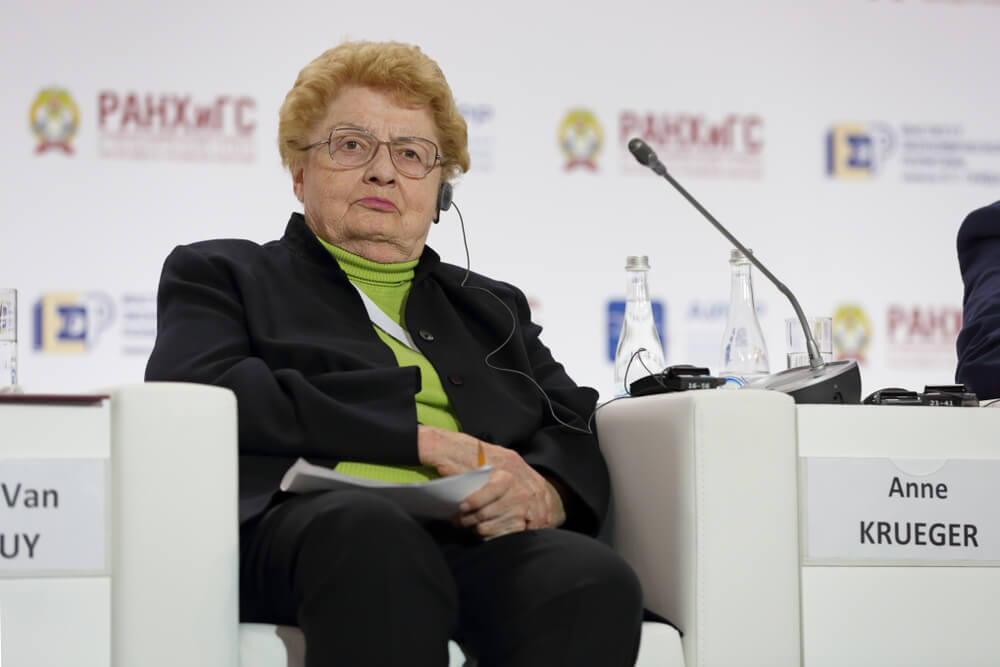In the aftermath of World War II, the end of colonial rule produced a wave of newly independent – and mostly poor – countries, which global institutions and economists grouped under the label “developing economies.”
Two giants, China and India, immediately stood out. Both suffered from crushingly low per-capita incomes and were governed by political movements promising to boost economic growth and raise living standards.
In China, the Communist Party built a revolutionary state, while India’s Congress party established a secular democracy.
For years, neither country delivered the prosperity its leaders had promised. Then, in the late 1970s and early 1980s, the Communist Party of China broke with ideological dogma and embraced economic reforms.
The results were astonishing: by the 1990s, Chinese per-capita income was rising at breakneck speed. India’s economy, by contrast, remained stagnant even as its democracy thrived.
The balance has shifted since then. China’s annual GDP growth rate, though still a respectable 5%, has slowed markedly. India, meanwhile, has been gaining momentum.
According to the International Monetary Fund, the country’s GDP is expected to grow by 6.6% in 2025 and 6.2% in 2026, making it the fastest-growing major emerging economy.
This reversal owes as much to politics as it does to economics. Mahatma Gandhi and Jawaharlal Nehru, India’s first prime minister, aimed to establish a firmly secular state anchored in strong democratic institutions.
Aside from a brief interruption in the late 1970s, that democratic framework has endured.
Yet for decades, India lagged far behind its peers in reducing poverty and generating the kind of rapid economic growth seen in Brazil, Turkey, and especially South Korea.
Average incomes remained among the lowest in the developing world.
The idea of a Hindu state
While Deng Xiaoping’s reforms in the early 1980s jolted China out of stagnation and ushered in decades of extraordinary growth, India did not act until a balance-of-payments crisis in the 1990s forced the government to implement long-delayed reforms.
Only then did economic performance begin to improve. By 2010, India’s growth rate had inched ahead of China’s.
These economic gains, however, did little to protect India’s political establishment from public discontent.
In 2014, the Congress party suffered a humiliating election defeat, clearing the way for Narendra Modi’s Bharatiya Janata Party.
Once in power, Modi and the BJP broke from India’s longstanding commitment to secularism, with Modi openly championing the idea of a Hindu state
Once in power, Modi and the BJP broke from India’s longstanding commitment to secularism, with Modi openly championing the idea of a Hindu state.
In 2024, Modi outlined an ambitious goal: transforming India into a fully developed economy by 2047, the centenary of independence.
Achieving that vision would require sustaining annual growth of 7-8%, high levels of infrastructure investment, and ambitious structural reforms.
India’s biggest challenges remain domestic
Now in his third term, Modi remains politically formidable. After the BJP lost its parliamentary majority last year, the recent election in Bihar – India’s third most populous state – was widely seen as a test of his standing.
The results showed a surprising surge in support for the BJP-led coalition, reaffirming Modi’s mandate.
Still, meeting Modi’s 2047 goal will be extraordinarily difficult. For starters, India faces powerful geopolitical headwinds.
Under President Donald Trump, the United States has imposed a steep 50% tariff on Indian imports as punishment for India’s purchases of Russian oil.
Trump’s recent overtures to Pakistan have further strained bilateral relations.
But India’s biggest challenges remain domestic. To cultivate the human capital an advanced economy requires, India’s education system must be dramatically improved in terms of both quality and access, with many more students pursuing some form of tertiary schooling.
Escalating tensions between Hindus and Muslims, fueled by the erosion of India’s secular tradition, threaten not only social cohesion but the very foundations of long-term growth
Social programs will have to be expanded and modernized to reduce poverty and support growth.
Strained public finances complicate that task. The central government, along with many Indian states, runs persistent deficits.
But that is only part of the problem, as rising public debt and a widening current-account deficit leave the economy more exposed to shocks.
These vulnerabilities are compounded by corporate balance-sheet risks: several major companies carry significant foreign-currency debt while their revenue is in rupees, so any sharp depreciation could leave highly leveraged firms struggling to service their obligations.
Moreover, escalating tensions between Hindus and Muslims, fueled by the erosion of India’s secular tradition, threaten not only social cohesion but the very foundations of long-term growth.
2047 ambition
India cannot continue to marginalize its nearly 200 million Muslim citizens and still achieve Modi’s goal of reaching developed-country status by 2047.
 Today, as China’s economy slows and its political system grows increasingly repressive, India has a rare opportunity to advance its economic goals while bolstering democratic resilience - Anne O. Krueger
Today, as China’s economy slows and its political system grows increasingly repressive, India has a rare opportunity to advance its economic goals while bolstering democratic resilience - Anne O. Krueger
If one had assessed China and India in 1990, the verdict would have seemed obvious: China had mastered economic modernization but remained an authoritarian state, and India had built a vibrant democracy but had failed at development.
Today, as China’s economy slows and its political system grows increasingly repressive, India has a rare opportunity to advance its economic goals while bolstering democratic resilience.
To seize that opportunity, India must pair faster growth with institutional reform and a renewed commitment to secular governance.
If it can do that, it could not only fulfill Modi’s 2047 ambition but also demonstrate the power of democracy to deliver broad-based prosperity.
Anne O. Krueger, a former World Bank chief economist and former first deputy managing director of the International Monetary Fund, is Senior Research Professor of International Economics at the Johns Hopkins University School of Advanced International Studies and Senior Fellow at the Center for International Development at Stanford University.